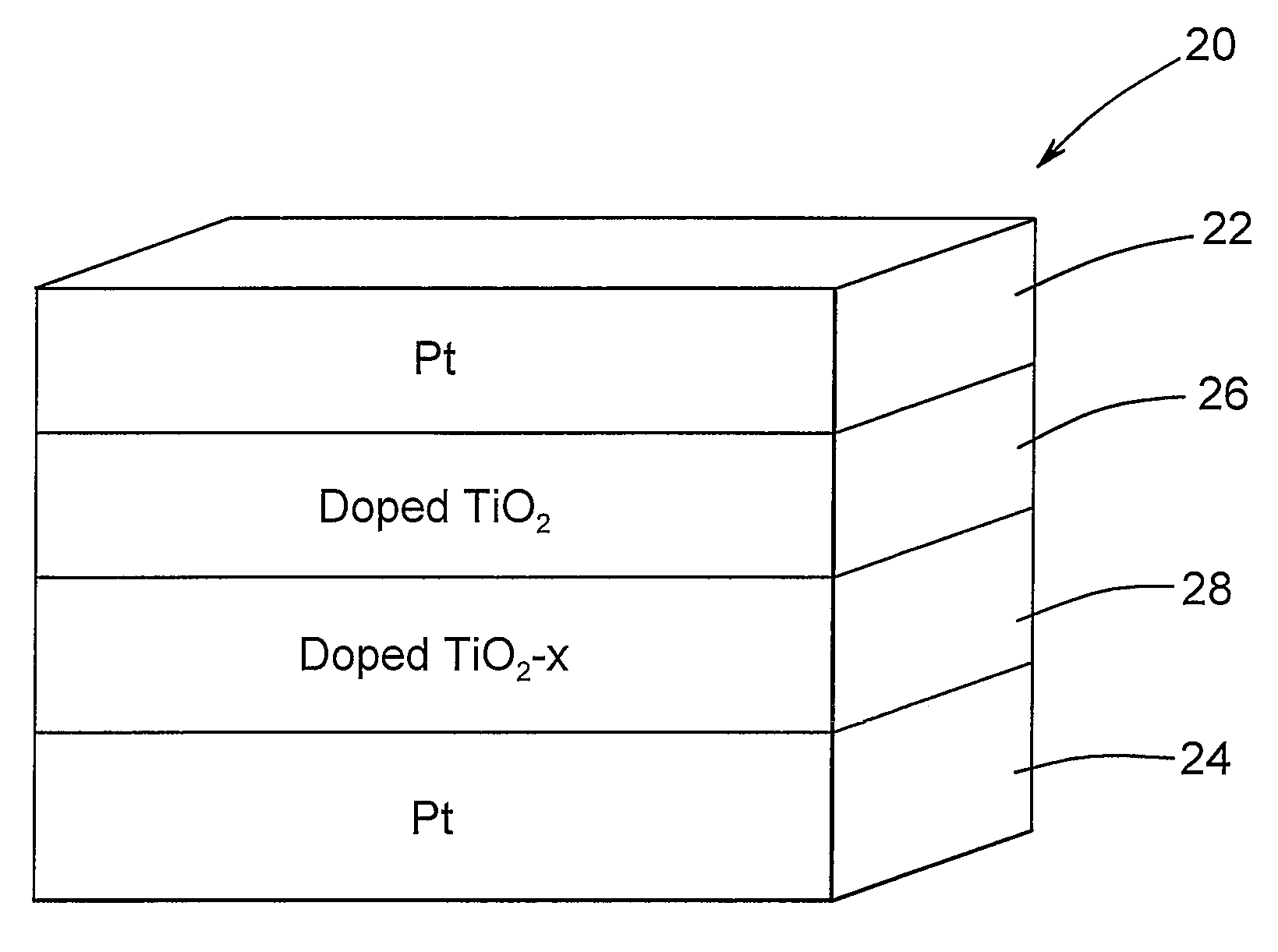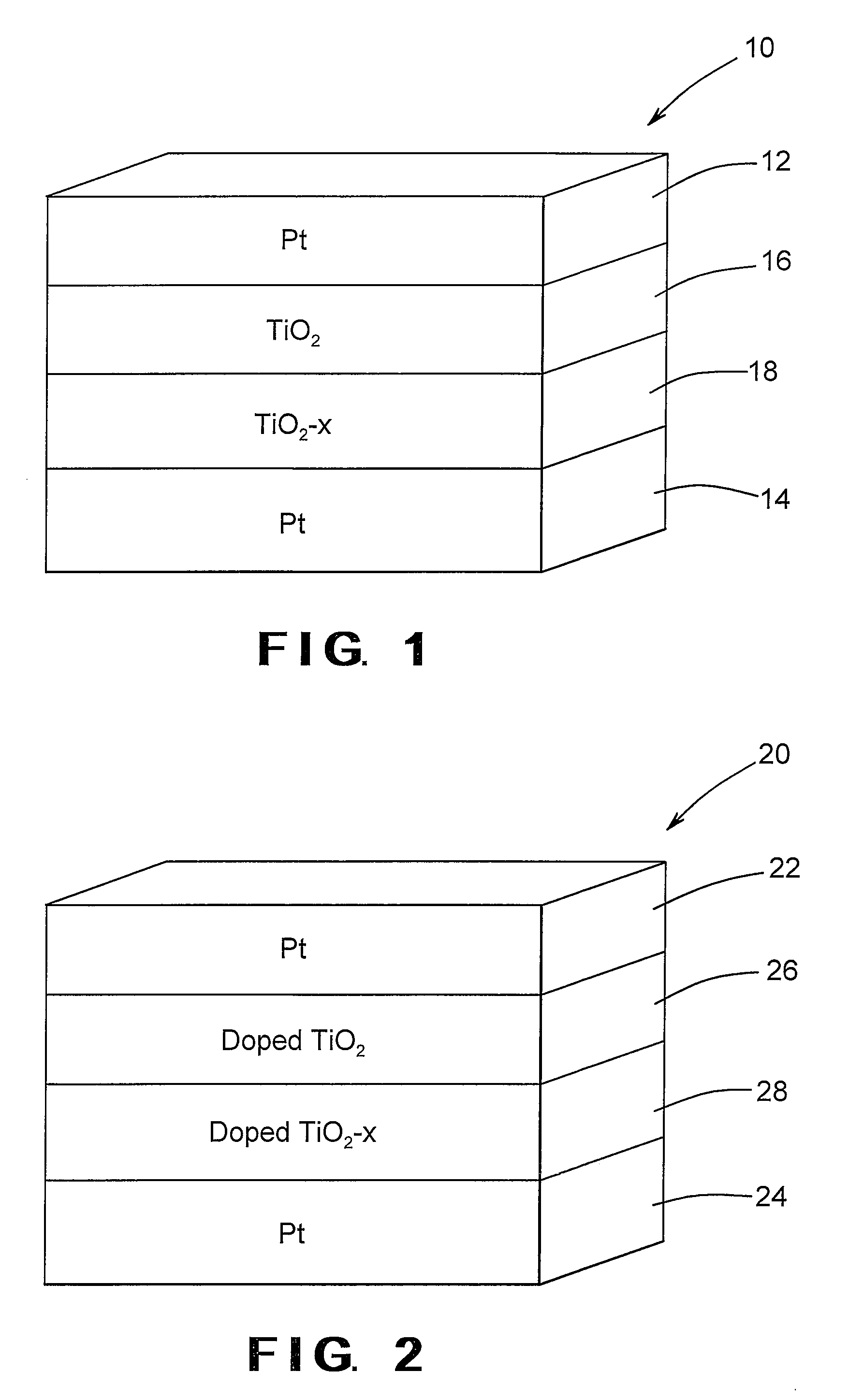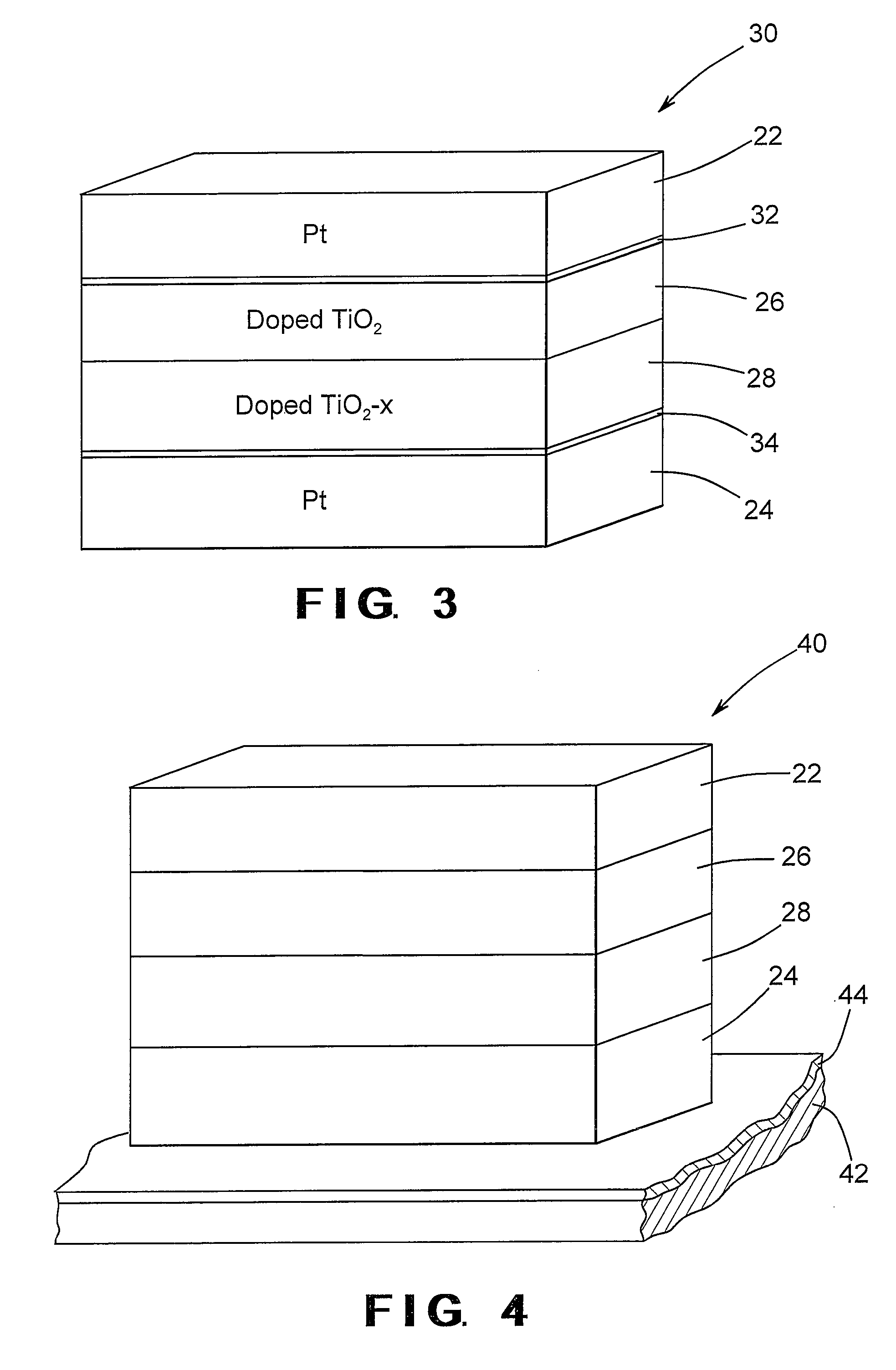Nanoelectric memristor device with dilute magnetic semiconductors
a technology of dilute magnetic semiconductors and memristor devices, which is applied in semiconductor devices, digital storage, instruments, etc., can solve the problems of difficult design of large-scale integration memory devices for low-power applications using this technology, the switching speed is much slower in memristor devices when switching, and the conductance in both on/off states
- Summary
- Abstract
- Description
- Claims
- Application Information
AI Technical Summary
Benefits of technology
Problems solved by technology
Method used
Image
Examples
Embodiment Construction
[0021]As described herein, a magnetic and / or a paramagnetic doping material (such as, for example, manganese, cobalt, iron, nickel, or chromium) is added to one or both of transition metal oxide layers of a nanoelectronic memristor device. The transition metal oxide layers may, for example, be formed from titanium dioxide, hafnium dioxide, strontium titanium oxide, zirconium dioxide, zinc oxide, tantalum oxide, hafnium lanthanum oxide, or hafnium aluminum oxide. The doping with the magnetic and / or a paramagnetic doping material achieves the formation of a dilute magnetic semiconductor oxide material, where change in magnetization can be achieved as a function of the oxygen vacancies concentration in the magnetically doped layer. Under an applied bias, the oxygen-vacancies can be injected from vacancy-rich metal oxide into the oxygen-rich / stochiometric metal oxide. This changes the oxygen vacancy concentration in the magnetic metal doped layer and, thus, results in the change in the ...
PUM
| Property | Measurement | Unit |
|---|---|---|
| thickness | aaaaa | aaaaa |
| temperature | aaaaa | aaaaa |
| pressure | aaaaa | aaaaa |
Abstract
Description
Claims
Application Information
 Login to View More
Login to View More - R&D
- Intellectual Property
- Life Sciences
- Materials
- Tech Scout
- Unparalleled Data Quality
- Higher Quality Content
- 60% Fewer Hallucinations
Browse by: Latest US Patents, China's latest patents, Technical Efficacy Thesaurus, Application Domain, Technology Topic, Popular Technical Reports.
© 2025 PatSnap. All rights reserved.Legal|Privacy policy|Modern Slavery Act Transparency Statement|Sitemap|About US| Contact US: help@patsnap.com



